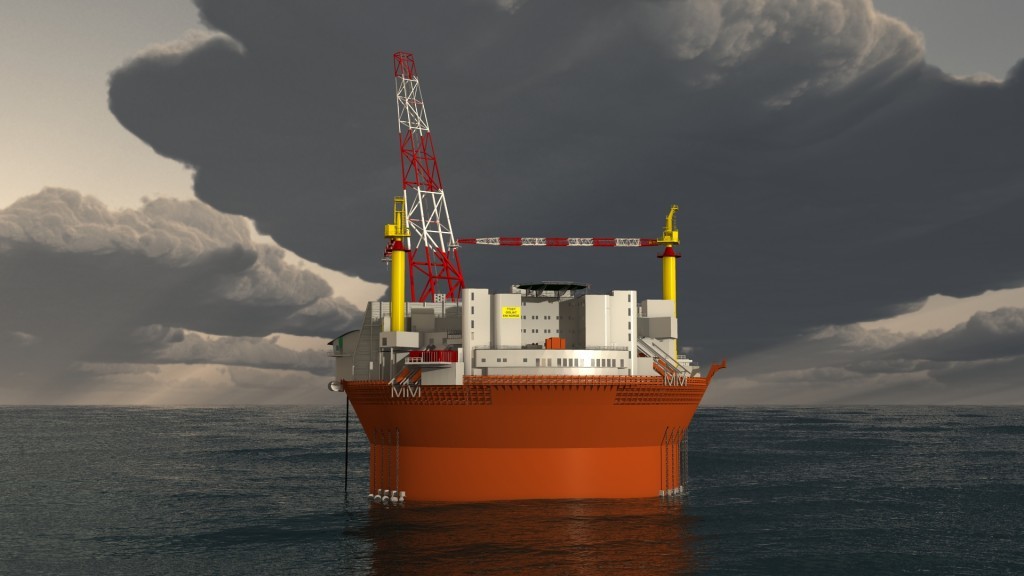
Last month’s arrival of the Goliat floating production unit in Norwegian waters on the back of a Dockwise heavy lift ship is a milestone for a project that is running around two years behind schedule and massively over budget … at least 50%.
It had been expected onstream late 2013, then this slipped into 2014 and now it is supposed to be later this year, fully 15 years since the oilfield was discovered in 2000.
Goliat is located on production licence 229, which was awarded in the Barents Sea Round in 1997. The licensing round was initiated by the authorities in order to promote interest in the Barents Sea as an oil & gas region.
The discovery was made with the first exploration well in 2000, drilled about 85km (53 miles) north-west of Hammerfest in north-west Norway.
The field has two main formations . . . Kobbe and Realgrunnen, plus two smaller structures, Snadd and Klappmyss.
The Realgrunnen group lies at some 1,000m depth, while the Kobbe sits at around 1,800m depth.
The pressure in the reservoirs is low – 123 bar for the Realgrunnen and 192 bar for the Kobbe. Eni considers this to be an advantage in terms of well control, but presents challenges in connection with production.
According to operator Eni’s Goliat website, a total of five wells have been drilled.
Recoverable reserves are estimated at 174million barrels, plus moderate quantities of gas which will be variously re-injected into the Kobbe formation to increase oil recovery, and/or will be transported to the processing plant at Melkoya, where gas processing plant originally built to accommodate the Snohvit gasfield are located.
Goliat, the first oil development in the Norwegian Arctic, is expected to be in production for at least 15 years though this may be extended should new discoveries be made in the vicinity.
It took eight or so years work including further appraisal before Goliat was considered a viable proposition by Eni (65%) and Statoil (35%); with submission of the development plan to the Norwegian authorities made in 2009.
The partners selected a variant of the then fashionable Sevan FPSO 1000 for a number of reasons, not least the ability of the design to cope with metocean conditions from any quarter without the need to weathervane, thus eliminating the need for a turret assembly, which would have been required for a conventional monohull.
The selected FPSO concept consists of a circular facility containing a processing plant, oil storage capacity and accommodation facilities. Produced water will be re-injected into the reservoir. Produced oil will be stored aboard the platform prior to onward transport by shuttle tankers to the market.
The reservoir drainage system includes water and gas injection employing a total of eight well templates with 22 wells.
Twelve of these will be producers, while seven will be used for water injection and three for gas injection.
Including wellheads, it was Aker solutions that won the contract to deliver a subsea production system for the project. The workscope covered engineering, procurement and construction of a complete subsea production system. Subsea hardware deliveries included eight overtrawlable four-slot subsea templates with manifolds, 24 subsea trees, subsea control systems, 20km of steel tube umbilicals, work-over equipment and a tie-in and connection system.
It was Technip that secured the engineering, procurement, construction and installation project award for the provision and installation of infield pipeline systems (flexible risers, clad production flowlines and water and gas injection flowlines) and installation of the subsea production system.
But, in 2010, it was Hyundai Heavy Industries that bagged the production unit deal worth $1.1billion at the time. The FPSO would have plated capacities comprising: 100,000 barrels of oil and 3.9million cu.ft per day production output and 1million barrels of storage.
It seems that difficulties with the FPSO’s build lie behind most of the delay.
Recommended for you
